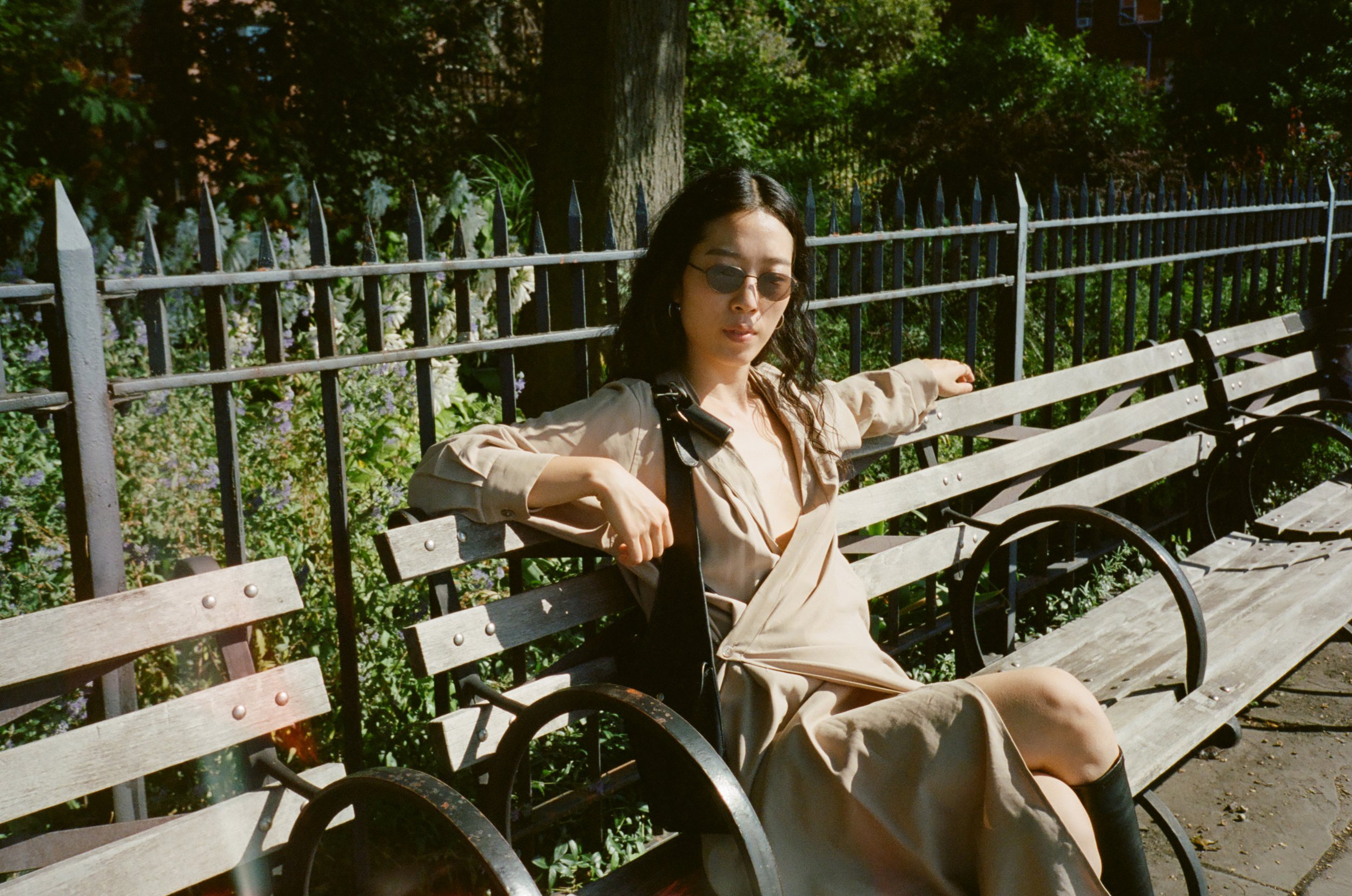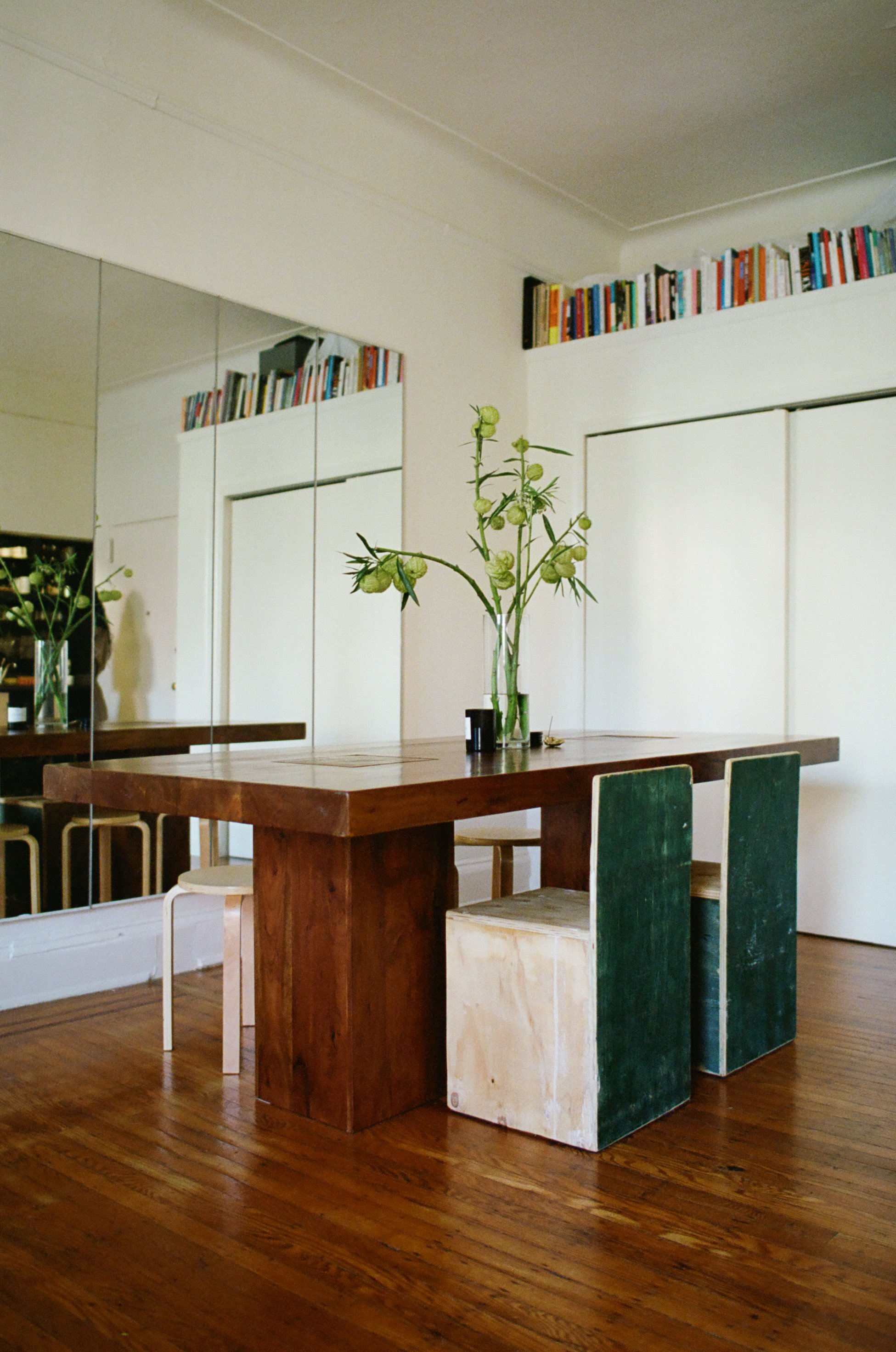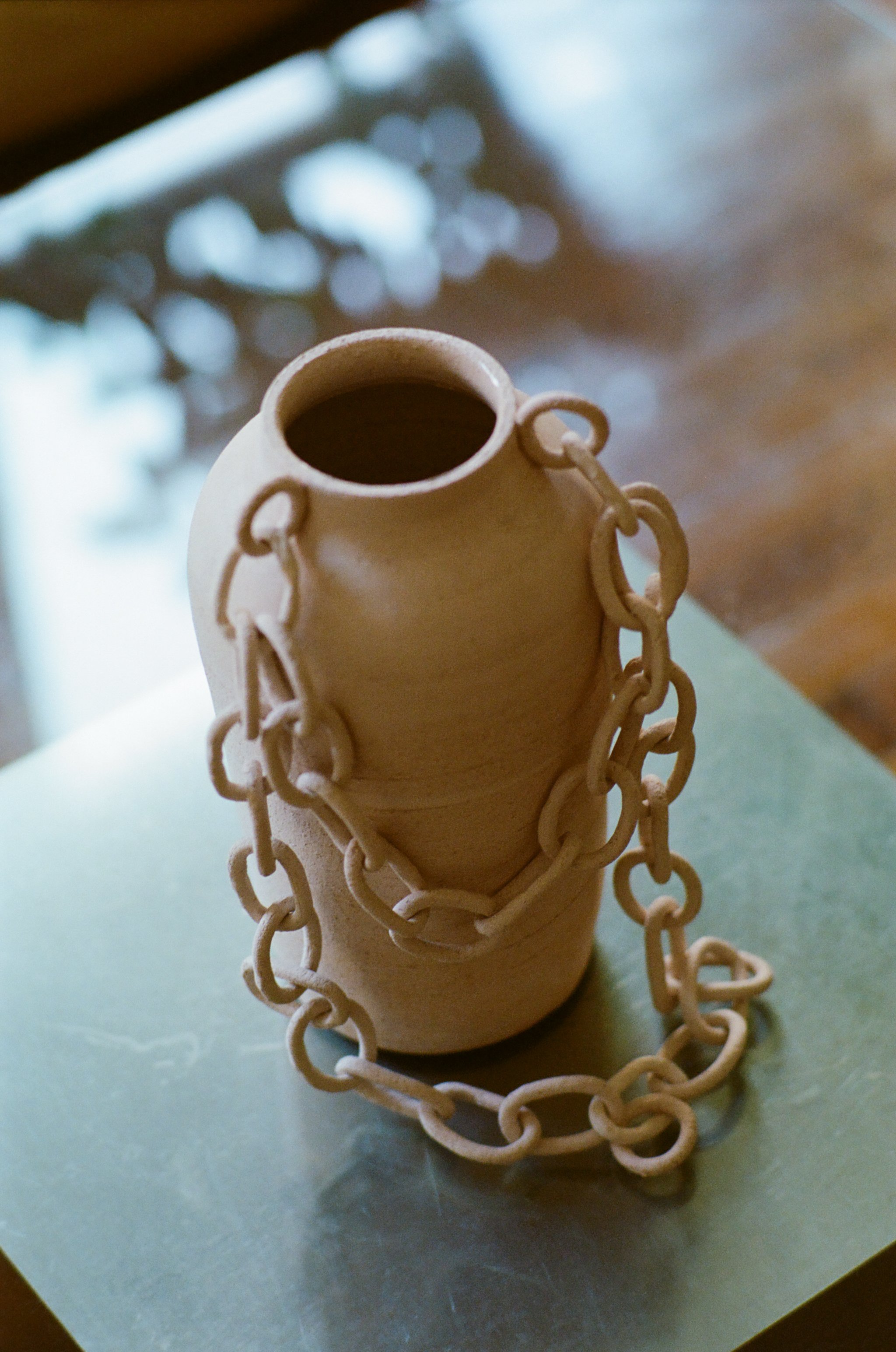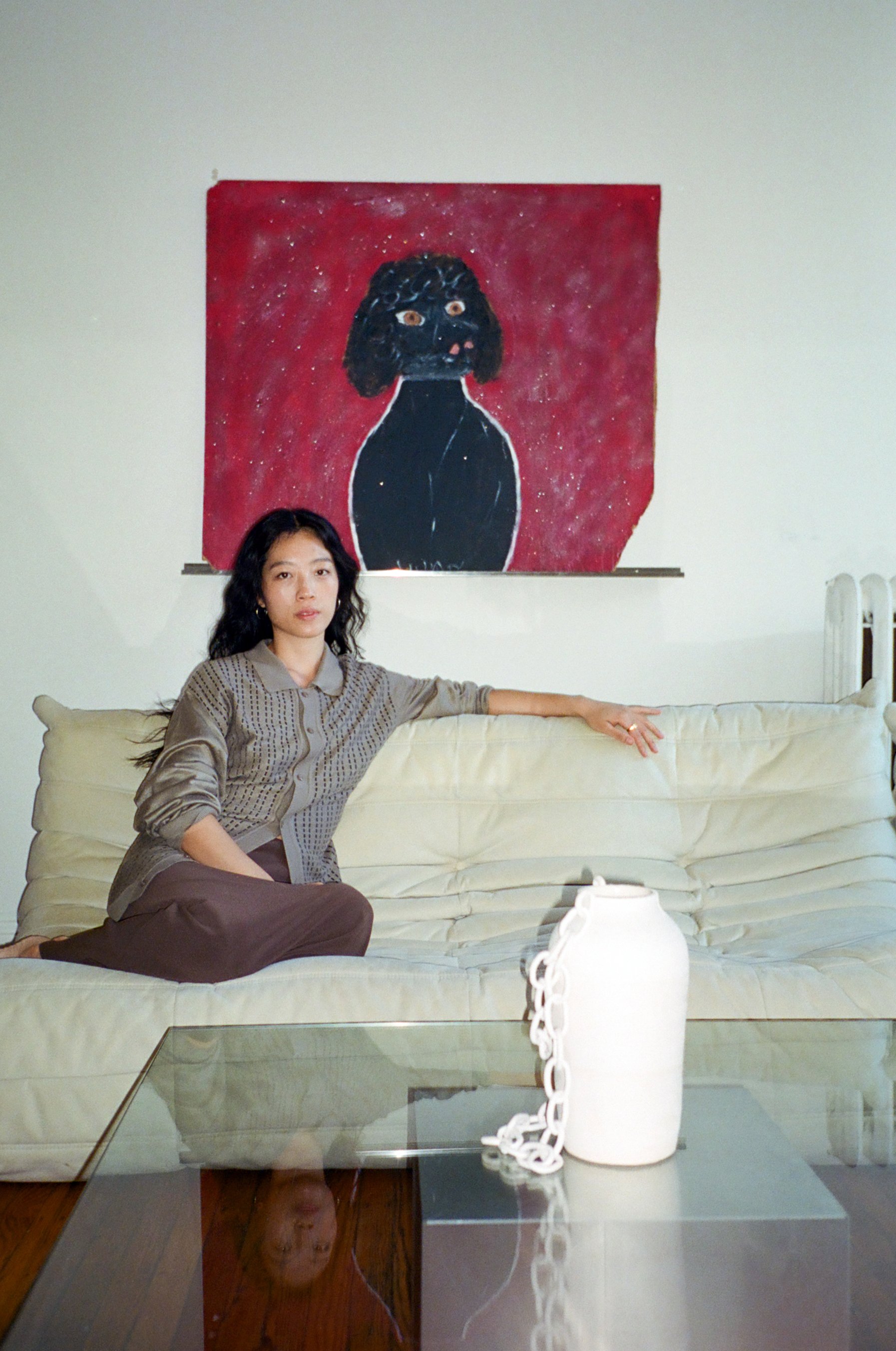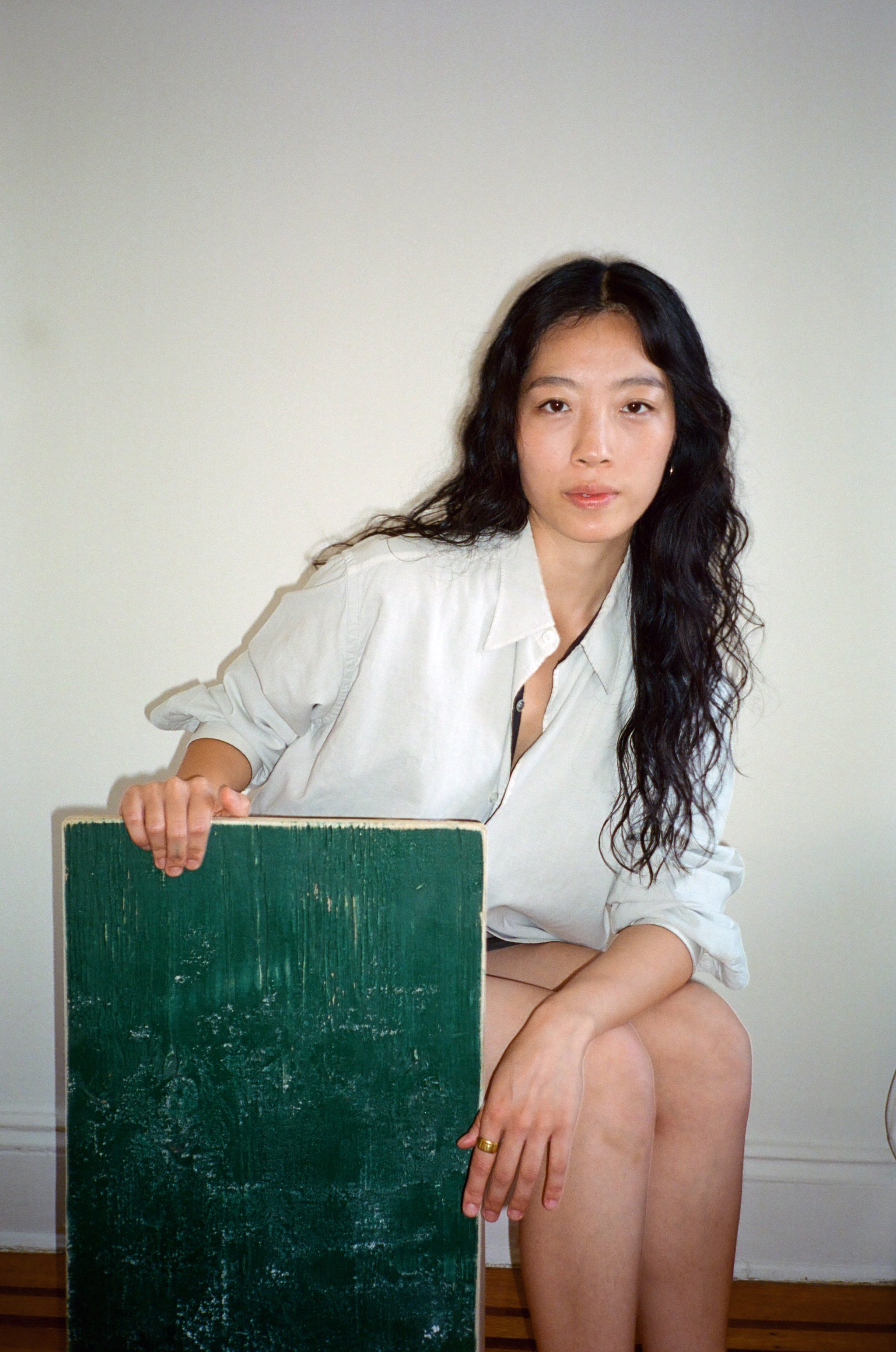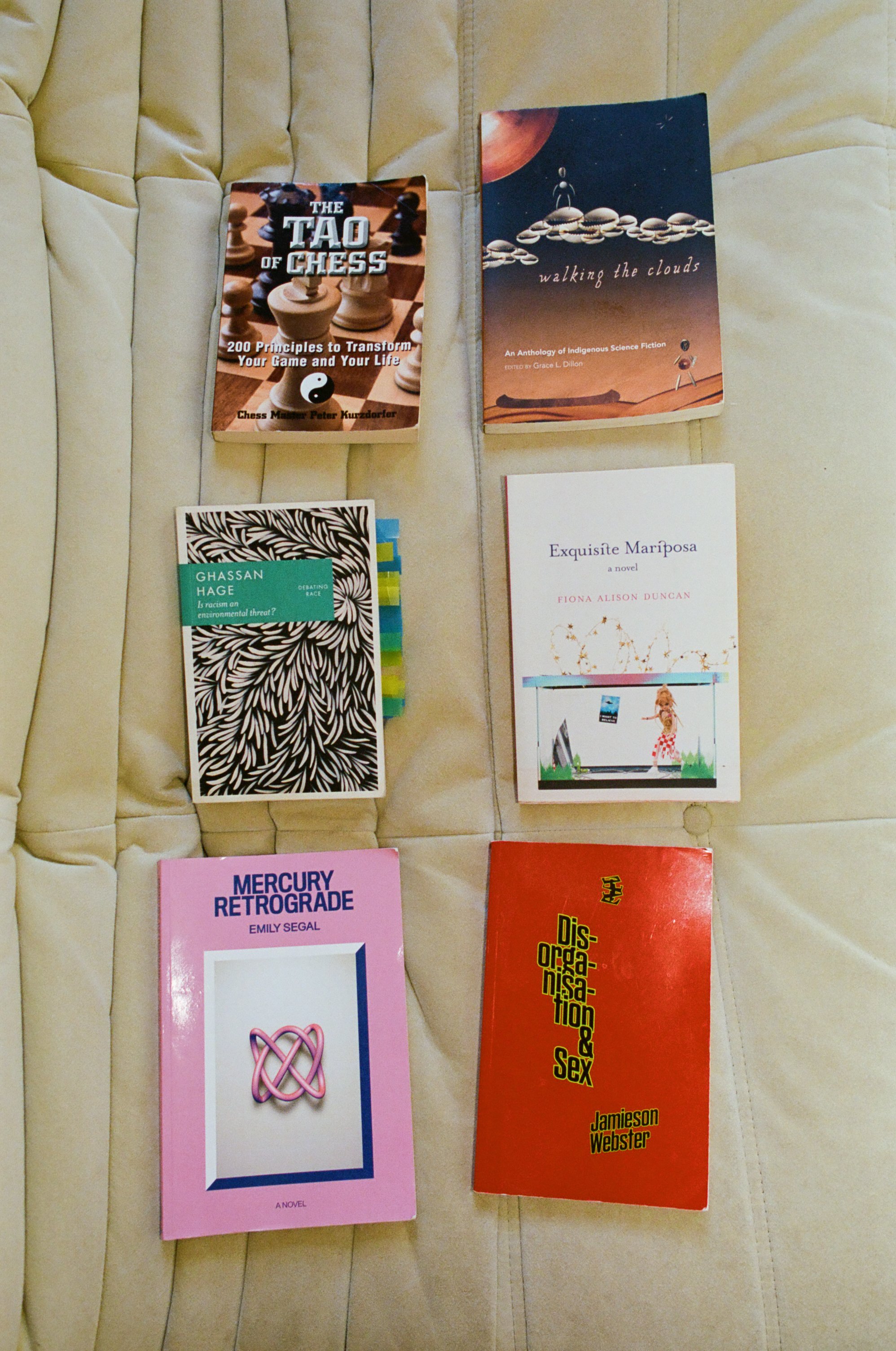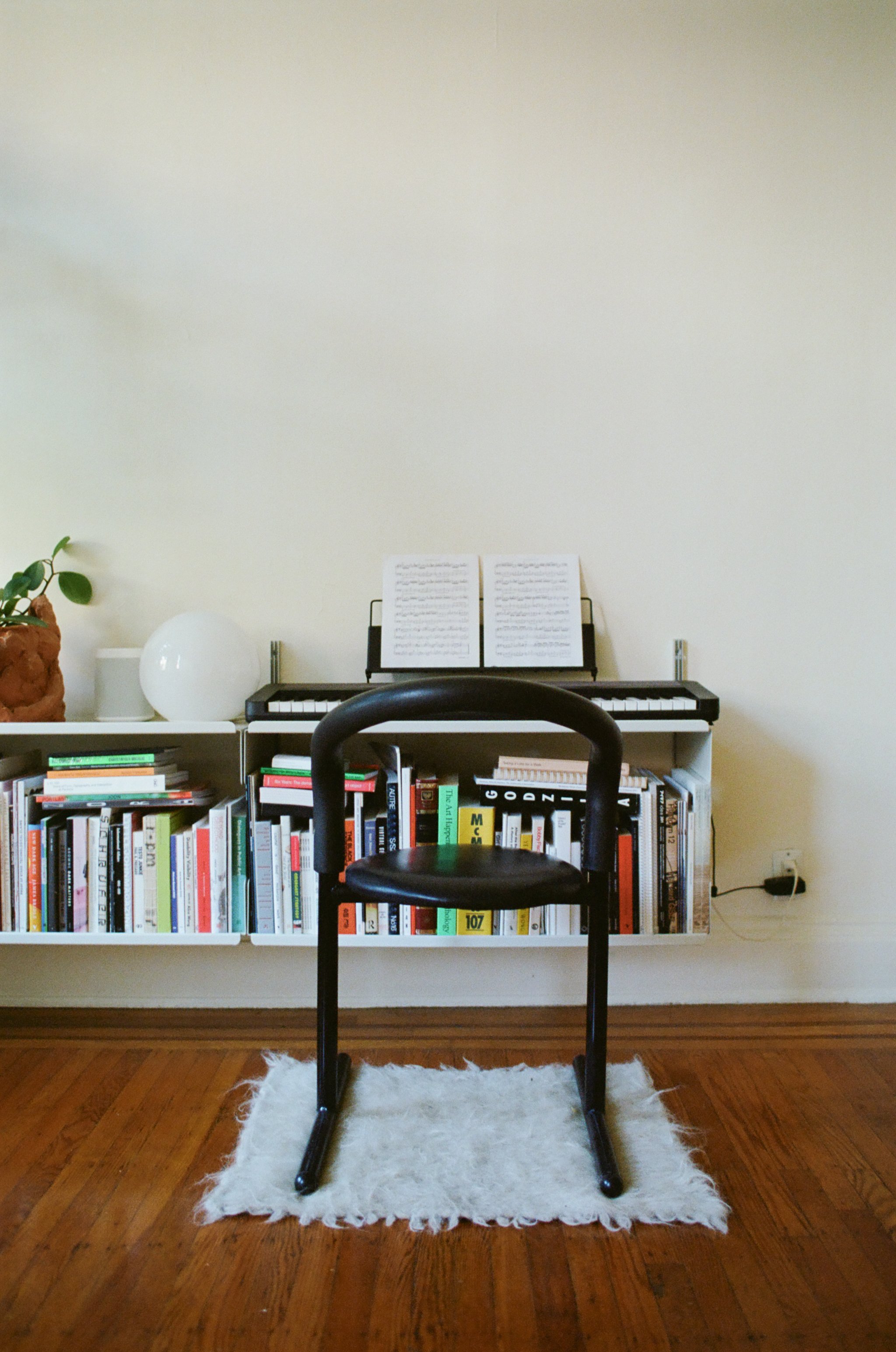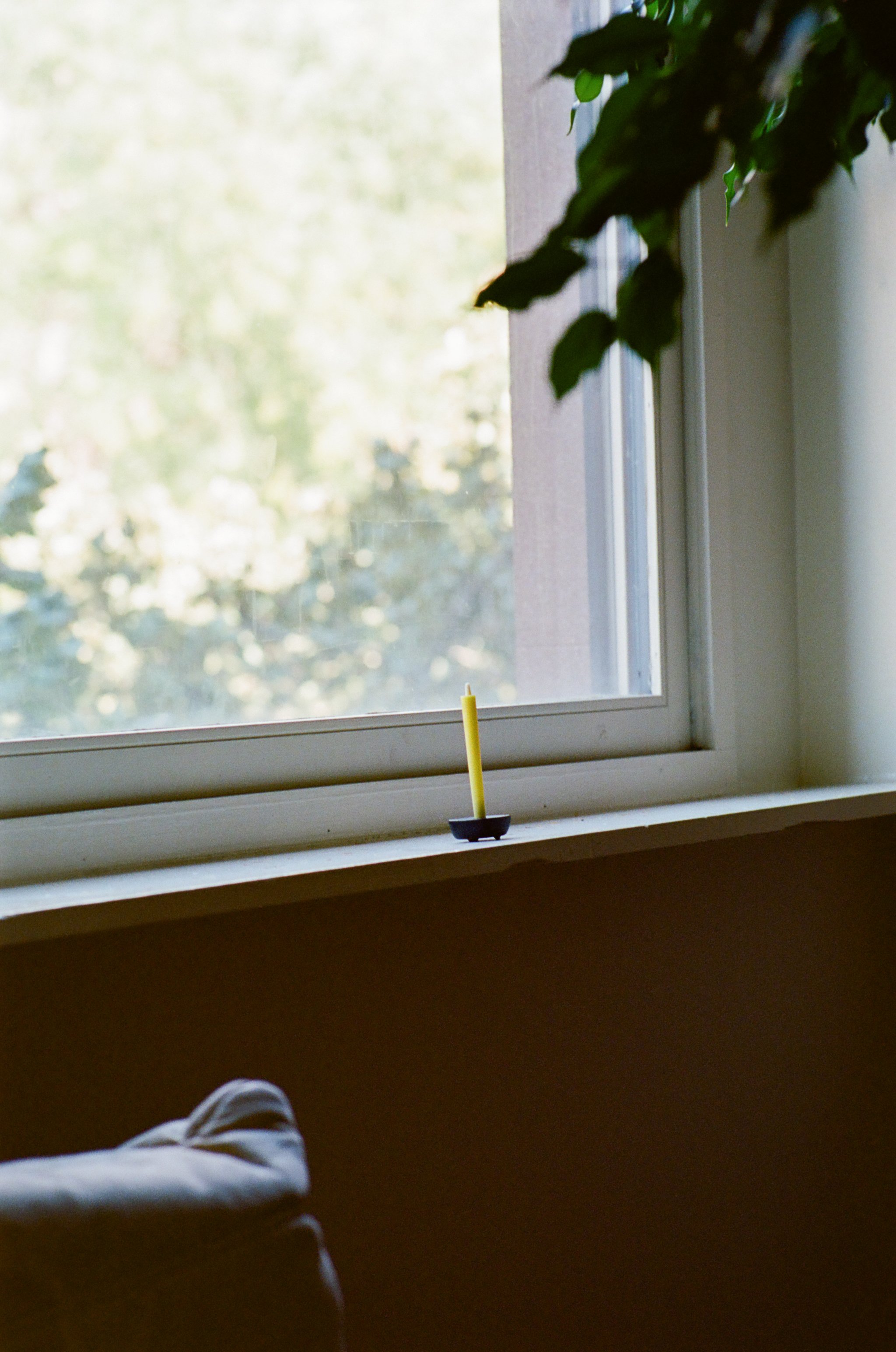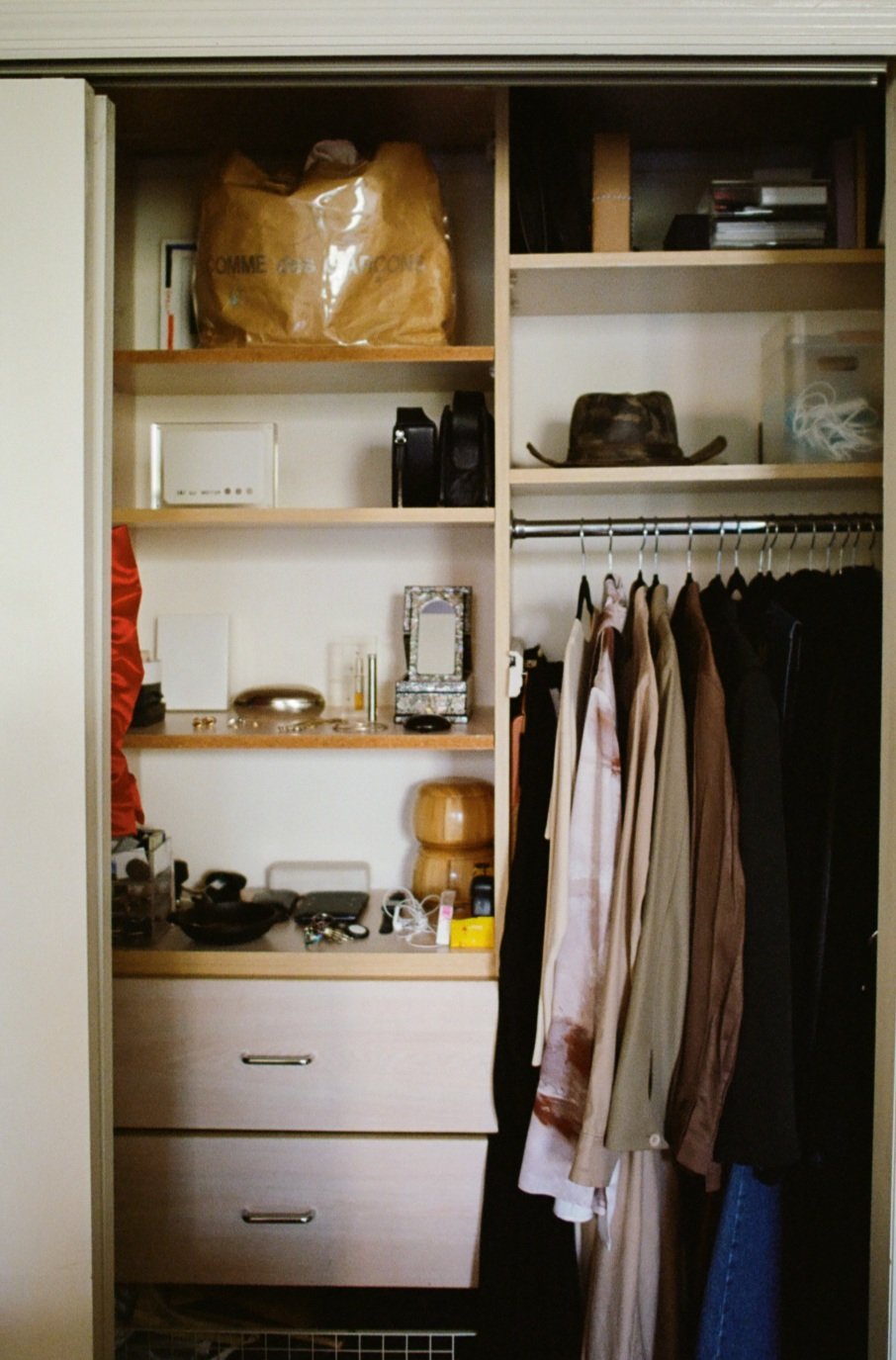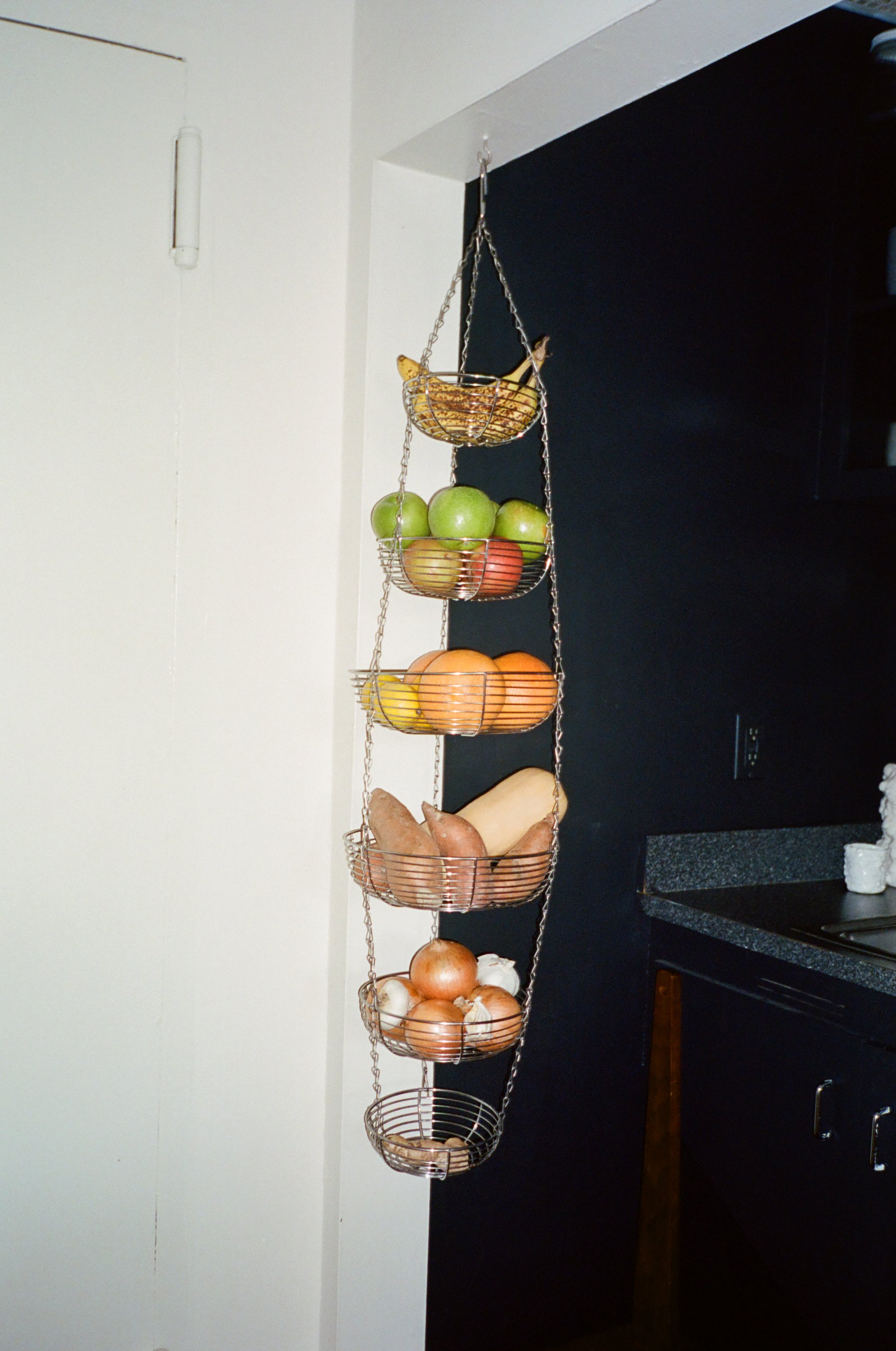Professor (and author, and designer, plus a number of other titles) Mindy Seu might be intercepted on the train to or from New Haven, where she’s currently teaching an MFA course on the lecture performance, or “thought theater,” but you’re just as likely to spot her on stage, putting her knowledge to practical use as she delivers an incisive talk on anything from hypertext to revisionist internet history. If you’re able to schedule your way into her packed agenda, she’ll take you on a walk down her favorite Brooklyn Heights promenade, since her old favorite meeting spot, a divey Brooklyn diner with blue vinyl booths, went under. We were excited to pick Mindy’s brain, as full of associations and asides as a Wikipedia page is loaded with hyperlinks, touching on everything from resistance training to research-based practice to the effects growing up in a conservative household had on her sexuality to her love of Dries van Noten — read on for all this and more.
♫ listen to mindy’s playlist | ⌨ mindy’s last google search
on her morning routine
This year, my life has been really hectic. Because I’ve been traveling so much, it’s been difficult to establish a consistent routine, but I intentionally took the entire month of July off as a breather. That’s when I developed my ideal routine: waking up early without an alarm, drinking warm lemon water with a pinch of cayenne, stretching, getting in a quick workout, then having a green smoothie with pea protein powder.
Unfortunately, during the semester or a busy travel period, it’s very difficult to maintain that idyllic morning routine. I’ve been flying at least twice a month, so I always have a bag packed and ready to go by the door — all my toiletries are duplicated, one at my house, one in my suitcase. During those periods, I wake up, drink a glass of water that I leave at my bedside table, and answer emails on my phone. It’s definitely not ideal, but it is what it is! When I travel, I take belly bands and workout straps because they’re so portable and then I’m able to do some light resistance training, even if the rest of my morning routine is shot.
on her flower-filled childhood
My mom was a painter, but during the day, she and my dad ran a flower shop in Orange County, California. My sister and I were essentially free labor; we would help with arrangements, deliveries, and pick-ups at flower wholesalers. All of our birthday parties growing up were flower-themed. My parents were on a budget, at the time, but they were able to make these creative experiences where my friends would all come over, and we’d make bouquets that looked like little poodles or ice cream sundaes made of carnations and other flora. In high school, I always assumed I would go into business because I was very good at math. My dad encouraged this, but I was so involved with extracurriculars, like editing my high school yearbook and designing t-shirts and flyers for school clubs. My mom and I hand-painted all of my posters when I ran for student government each year. I still have all of them — I think they’re works of art.
““I am inspired by developing my own research, then letting the form naturally emerge. It almost starts to design itself. Because I’m medium-agnostic, I like the freedom that comes from thorough research that can manifest as anything: an essay, a curatorial project, a lecture performance, book design — anything.””
on how her many disciplines coalesced in academia
I ended up going to UCLA in the Business Economics department. While I was there, I took studio classes in the Design Media Arts department, and I ended up transferring there in my second year. This was extremely formative, and I’m still close to so many of those faculty now. UCLA was very interdisciplinary and encouraged the mixing and matching of their core areas of videos, games, software, design, and these unusual, mixed genres started to appear. I gravitated towards software and books, and amazingly, I’m still focused on that now. My senior thesis was a print-on-demand generator, and I’ve incorporated that into multiple projects in my current career.
After UCLA, my first job was at MoMA in New York at their in-house Design Studio. Then I went to 2×4, a global design consultancy, that, at the time, was building a West Coast office, so I was part of a bicoastal studio between San Francisco and New York. We were working with a mix of large-scale projects, fashion clients like Marc Jacobs or Prada, cultural institutions like the Pérez Art Museum in Miami or the Rubin Art Museum in New York, and also a lot of large technology and corporate projects like Starbucks, Apple, Target, etc. I learned a lot during this period, but it also started to feel very much like advertising. I was pretty eager to focus on developing my own research — during this time, I also started teaching interactivity at California College of the Arts while simultaneously working on my own projects that were focused on countercultural history. I wanted to show archival projects in online environments because they were so inaccessible in print. My experience was a natural segue into questioning the politics of archives, even though I didn’t have the language for it at the time. I think my biggest turning point was when I went to the Harvard Graduate School of Design to focus on design research; I was…28? 27? I was also cross-registered, which allowed me to take courses at MIT Media Lab, MIT Business School, and also Harvard Law because I was eager to learn more about the legal aspects of internet criticism.
I never intended to go into full-time teaching. When I was in grad school, I basically got scouted. Three different schools invited me to apply to full-time, tenure track teaching positions. I did it, because generally I fall in the camp of “it’s not an option until they say yes.” If they said no, it’s as if the offer had never happened. So I applied to these schools, and received offers from all of them, which was incredible. I ended up picking Rutgers because for me, I supported the ethos of public research universities rather than private art schools.
““I realized that internet policy-makers and internet artists have similar interests, but different skill sets. Internet artists make work that questions themes of data extraction, surveillance, provenance, identity, and this open display creates a cultural shift that then provides enough momentum for a policy shift. Then once it moves into that terrain, these critiques become known to the wider public.””
on the origins of her cyberfeminism
When I was a fellow at the Berkman Klein Center for the Internet & Society at Harvard Law School, I realized these internet policy makers and my peers making critical, computation-driven art had very similar interests, but there didn’t seem to be much overlap between the two. This was a primary impetus for my latest publication, Cyberfeminism Index. When you look at examples in the book, there’s a lot of artwork, but there’s also a lot of grassroots activism, educational initiatives, legal efforts — different disciplines with similar goals. And what a great way to make change, to push from all sides.
When we think about the metaphors between technology and nature, they’re extremely similar… bugs, trees, clouds. The internet is material, not ephemeral. Some might argue that this swell of interest in AI is actually an existential question: “How do brains work? Can we understand by recreating them?” If you start to think about these analogies, when we [in cybernetics] say “code,” not only is that computer programming, it’s also trying to understand the different ways we’ve been encoded, or how we were socialized that led to certain behaviors. It can become an argument against gender essentialism, which proposes that men and women have distinct, innate traits. In contemporary society, they do practice these stereotypes, not necessarily because we were born with them, but more so because this is how we were socialized. By becoming away of this, you can then push back and begin to unlearn all the things we’ve learned, finding the blurriness in what this gender spectrum actually incorporates.
on looking to her childhood to develop her new work
There is a big culture shift from growing up in a conservative environment with very religious immigrant parents — I’m first generation. But this is where a lot of my fascination with bodily autonomy began to form. I’m currently working on a manuscript about how sex workers have shaped the development of the internet and new technologies. Sex work, in my mind, is in the same group as the right to abortion, care work, domestic labor. All of this is about bodily autonomy. Sadie Plant has this great quote that describes patriarchy as an economy, built upon the extraction of labor and resources from others. Feminist economics is a field that studies not only numbers and metrics, but rather a holistic system that forces people into certain positions, and proposes different ways of pushing back against that.
I’m sure my current interest in bodily autonomy and sexualized systems emerged because I had none of that when I was young. I was taught that sex was purely for conception, a duty rather than a pleasure. This puritanical indoctrination filled me with a lot of sexual shame throughout my 20s. Even if you’re intellectually aware of this, having your body recondition itself into a new physical state is so difficult. In my 20s, I was seeing a psychotherapist and sex therapist, which is typically confused with bodywork, but it’s actually talk therapy with a focus on sexual discourse. Working on this mind-body split will be a lifelong practice. Feeling present is difficult when you’ve only been taught to focus on the future and external validation.
““We are constantly seeking out new experiences, new conversations, and gathering these disparate materials and snippets…What I think I’m especially good at is putting them in some sort of order. This is why I’m drawn to indexing, organization — all of these things that make sense of how things interconnect, even if others tell you that they don’t. When you’re collecting things, the primary throughline is you. Friends will jokingly say that I think like a computer, because I’m very logical, which is true! But I think I’m trying to analyze associative thinking and how that leads to new forms of knowledge. ””
on her taxonomical proclivities
I’ve always had a bit of a compulsory organizational instinct. When I was young, I would always sequence my books in alphabetical order. All of my clothes were arranged by color. Things like this were previews of my mentality now. But as you get older, you’re also able to develop more sophisticated, thoughtful, new taxonomies. Why are we putting things in certain categories? How can we develop new ones?
on code switching
A lot of my life involves code switching. How I act in a school setting is different from how I act when I’m with friends in New York, and very different from how I act when I’m with my parents. I’m really lucky to be in departments like the ones I’ve worked in at Rutgers or Yale, because they encourage expanded research. They understand why a curatorial project, or an essay for a mainstream publication, or a performance are all legitimate outputs of research.
Part of the code switching feels more personal, like a form of regulated self-expression. This might be a form of self-policing, because you’re aware of unspoken hierarchies of power, internalized sexism, students’ perception, etc. How I dress in academic environments is different from how I dress in my regular life. No one explicitly tells me to do this, but it’s a conservative impulse, because I’m a woman, because I’m young, oftentimes my grad students are my age or only a few years younger. It’s a way to suggest seriousness, and unfortunately, seriousness comes from — when you’re a woman in this type of environment — desexualizing yourself. Some of the most brilliant people I know are highly sexual and highly intelligent, but when you’re in the heart of empire, in academia, in government, in positions of power, these two traits are pitted against each other. I honestly respect my young undergrads who come to school in risque clothing. It’s part of finding your identity, of course, but it’s also brave. How you look should have no impact on your quality of work.
on dealing with nerves when public speaking
Nerves are good. At first, nerves would make me stumble, but then I realized, this is my body telling me that it is alert. It is aware that this is a new context, an important context. That said, I rarely get nervous when public speaking now, but this seems to be a sign that I need to move towards fear, to challenge myself. I also think for public speaking, and writing in general, it’s important to write in your own voice. Some of the best lectures I’ve attended are by people who feel like they’re talking casually, even if all of it is scripted. One strategy I use is to create a rough outline or structure of what you want to talk about, take a walk, no pen and paper, and record yourself talking about this topic, and then transcribe that. Then you will have the language that feels informative, yet digestible, structured, yet naturally flowing. Perhaps it also reduces posturing, or playing the role of an intellectual by parrotting jargon.
““There’s this great essay by Hannah Baer in the latest issue of Artforum, where she unpacks why we are so afraid of AI becoming more intelligent than humans. If you look at this historically, humans have positioned themselves as the most intelligent species, even though that’s not true. As the “most intelligent species,” we’ve used this power as an excuse to dominate other people, religions, nature…things that are seemingly “less intelligent.” If we continue this thought process, it makes sense that we might fear a more intelligent AI, as we could only imagine that it would try to dominate and extract resources from us. It’s not about the tool, it’s about how the tool is used; it’s not about AI itself, but rather how AI will be used for big business, widening the class divide, etc.””
on her mindfulness strategies
I have different strategies for how to practice mindfulness in a very hectic life. Because I’m constantly commuting, at the start of each semester, I try to implement a rule where I don’t work on trains. I try not to use devices or listen to podcasts while on transportation, I will only look out the window and think. Rebecca Solnit writes on this as well, that we don’t have enough time to go deep and daydream, because in the attention economy, we’re constantly distracted. Of course, there are days when I end up working on my laptop with a hotspot and a looming deadline, but in healthier moments, I use train time as a respite. I think this is also why I became interested in heavy weight training. When you’re trying to deadlift a 250 pound weight, you literally cannot think of anything else in that moment. You can only feel what your body is doing. Thinking is no longer involved.
on her beauty routine and personal style
I’m a natural skeptic who believes the beauty industry is fucking with women to sell more products. I really do think it starts with diet and exercise and sleep, beyond anything you apply topically. My beauty routine is consistent exercise, walking a lot, and drinking a ton of water. I eat out a fair amount, but when I’m at home, I cook pretty clean. I avoid processed carbs, and eat a lot of vegetables and lean proteins. I’m obsessed with green smoothies — that is what I drink every single morning when it’s warm. In winter months, I’ll make a savory congee for my daily breakfast. I am a creature of habit. In terms of topical treatments, I double cleanse at night, let my face air dry because bacteria on towels freaks me out, apply retinol or lactic acid, let that soak in for 15 minutes, and apply a gentle moisturizer. I like Aesop salts in my bath. In the morning, I’ll use a salicylic acid (because I’m very acne-prone), a hyaluronic acid, or other clarifying treatments like U.F.O. or Good Genes, both from Sunday Riley. Let that sit, moisturize, let that sit. It’s important to give products time to absorb into the skin. Beyond a tinted sunscreen by La Roche-Posay, I don’t wear that much makeup — occasionally I’ll put on concealer for under-eyes, but I vacillate between thinking dark circles are hot and vampy or make me look really tired. For a while, I thought I had very frizzy, poofy hair, but then I discovered that air drying with Gya Labs jojoba oil and a microfiber towel leads to beautiful mermaid hair.
In terms of style, even though I always crave something that’s a little more wild or expressive, I’m definitely a uniform person. I typically buy something and wear it until it falls apart. My daily pants are these oversized men’s trousers by Dries van Noten, they are absolutely perfect. I typically buy all designer items secondhand or through vintage consignment. Up top, I wear a lot of Standard Issue, very minimal, slim fit. It almost feels like a second skin. My top criteria is comfort and texture. If I’m trying to be expressive, that’s when I’ll start to throw in some color or unusual textures, always from Maimoun. I have a great computer bag by Aesther Ekme and my daily shoulder bag is by Maryam Nassir Zadeh.
on art that inspires her
Stephanie Dinkins has this amazing, sculptural video art piece called “Conversations with Bina48” in which she has discussions on topics such as race and morality with an intelligent computer that is said to be capable of independent thought and emotion. It tries to understand the body as a technology, done in an extremely beautiful and poetic way. I absolutely love live performance, from music to performance art to dance. I actually prefer live music to listening to it on my own, because the posturing by the musician gives it so much energy. One of the best lecture performances I’ve seen was by my Rutgers colleague Steffani Jemison at the Whitney Museum in which she lectures about the history of black gospel mimes alongside a dancer who is miming her words. The furniture designers at Redu Studios used upcycled materials like deadstock fabric, yoga mats, and metal scraps to make my dream lounger called the Flootsie chair. I often lose time looking at people’s trails and connections on Are.na. And I had major fomo for missing out on Journey Streams’ performative reading of a friendship poem, beaded letter by letter on an excessively long friendship bracelet that pooled on the ground.
on what she’s reading
Jamieson Webster wrote Disorganisation & Sex, and Fiona Duncan wrote Exquisite Mariposa. I met both of these people during this Pornhub panel organized by Esra Padgett and Fiona Duncan for their book series called “Pillow Talks,” called the Consent Event. It was a mix of academics, sex workers, therapists, etc., talking about how we could think about consent now.
The Tao of Chess is very helpful as I learn chess, to understand its principles, tactics, and philosophy. I tend to gravitate towards workbooks or instructional guides because that’s how I talk as well. You break things down, show why it’s important in the larger context, then ask others to apply it or reframe it in their own words. Is Racism an Environmental Threat? by Ghassan Hage is a very important book that, again, deals with technology’s relationship to nature and this larger cultural ecosystem. It’s never only about internet surveillance, it’s about the histories of surveillance, the histories of extraction, and how that’s paved the way for more accepted subservience, now that we’re in this platform oligopoly.
Mercury Retrograde is a fictionalized autogenesis about Emily Segal’s work in Genius. I’m very in support of people starting independent presses, and Mercury Retrograde was the first book published by Emily’s new press, Deluge. Walking the Clouds is a great anthology of indigenous science fiction that’s also in the Cyberfeminism Index.
on strategic reading
When I’m reading something, I will speed read, get the big bullet points of each paragraph and understand if it’s helpful for me. If it is, I’ll do a second read that’s more thorough, a close reading to highlight key quotes, annotate, etc. Then if it’s extremely relevant, I’ll transpose those annotations and highlights into Google Docs based on themes: digital gifts, AI, archives. I have a huge repository of quotes and comments that I can pull from when I’m writing an essay using keyword search — you basically note a full citation, like author and title, as well as metadata like who recommended it to you, alongside your quotes and annotations, added into the same doc. I’ll even add quotes from friends, excerpts from films or lectures, anything that seems relevant. Later on, when I’m writing something on that theme, I can draw from this repository and adapt as needed. It’s all about developing a citational practice for everyday life.
mindy’s favorite spots in nyc
For shopping: Saffron (flower shop), Laura Lombardi (jewelry), Tokio7, Ending Soon, and Procell (all vintage, designer consignment).
For eating: Estela, Hindu Temple Canteen, E-MO, Somtum Der.
For experiencing: King Spa, the Judd Foundation on Spring Street, the Noguchi Museum, the Dodge YMCA (gym with a pool!), Vacancy Project by Masami Hosono (the best hair salon), and Anthology Film Archives.
interview and images by clémence polès, edited by em seely-katz

